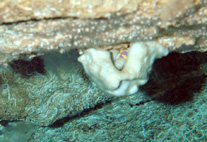Abstract
New polyneopteran insects are described from Pennsylvanian (Bashkirian, Moscovian) compressed fossils from the North of France (Insecta: Archaeorthoptera). Discovery of wing apex with distinct venation, e.g., apical fusion of RA with RP, numerous parallel posterior branches of RP with transversal crossveins, can be assigned to cf. Tococladus sp. (Cnemidolestodea: Tococladidae). It represents the second record of Cnemidolestodea from the Avion locality apart from Aviocladus pectinatus Prokop et al., 2014. Bruaylogus magnificus gen. et sp. nov., based on forewing venation, is attributed to Panorthoptera nec Orthoptera having some distinct characters for the placement either close to Oedischiidae or a more basal position possibly with affinities to genus Heterologus. Aviologus duquesnei gen. et sp. nov., based on forewing venation, differs from Oedischiidae by the presence of basal fork of M far from point of separation between M and Cu and fusion of MA with first posterior branch of RP. Aviologus share a long stem of M and simple CuPaβ with Heterologus duyiwuer and H. langfordorum, but both differ in well separated median and radial veins. These new fossils demonstrate that the archaeorthopterid insect fauna from the North of France was rather diverse with links to late Carboniferous and early Permian assemblages in Euramerica such as the Mazon Creek, Carbondale Formation or Elmo, Wellington Formation (Illinois, Kansas, USA) entomofaunas.

